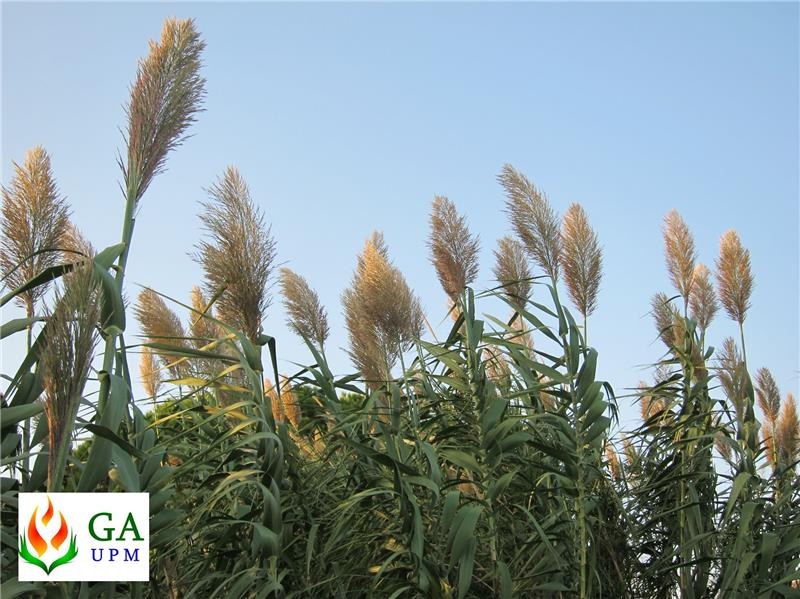Mar 6 2017
Researchers from the Agroenergy group at Universidad Politécnica de Madrid (GA-UPM) have developed a methodology that allows them to identify suitable marginal lands to grow plant species tolerant to salinity with bioenergy purposes. According to the results and taking into account the amount of marginal lands caused by salinity, the grow of giant reed would be a sustainable solution in our country (Spain) since we could produce an amount of biomass equivalent to the electricity consumed by about a million of inhabitants per year.
 Giant reed crop (Arundo donax L.). (Credits: GA-UPM)
Giant reed crop (Arundo donax L.). (Credits: GA-UPM)
In the area of bioenergy, that is, the production of renewable energy from biomass, the European Union (EU) is implementing regulatory measures to reduce the use agricultural crops and promote the land-use change for a bioenergy production. However, at the same time the EU is boosting the production of sustainable biofuels from lignocellulosic biomass. For example, the EU has been recently supporting the research on specific energy crops of a lignocellulosic nature such as the giant reed and the production of biomass on marginal lands.
In this way, an influential factor to consider marginal lands is salinity since it limits the plant growth. The degree of plant affection depends mostly on the plant species and the salinity level.
Dolores Curt, a female researcher from GA-UPM group says, “soil salinity is a limiting factor for agricultural crops, but it can be an opportunity to produce biomass and thus improve sustainability. Giant reed is an energy crop tolerant to salinity and supported by the European Union. For this reason, it is relevant to assess where these crops could be promoted and their production”.
The giant reed interest lies in the following characteristics: perennial herbaceous plant, adaptation to highly diverse edaphoclimatic conditions, great rusticity, high productivity in non-limiting water conditions, annual crop of lignocellulosic biomass and, as we know now, tolerance to salinity. In order to promote giant reed crops in salt affected areas, it is required to carry out a network of trials or to develop a methodology that allows us to make estimates from available data.
With this purpose, GA-UPM researchers have developed a specific methodology to estimate the biomass production that could mean the usage of saline marginal land to produce biomass using giant reed.
The proposed methodology is based on geo-referenced information and empirical performance response functions of giant reed to salinity and the availability of water. This method also takes into consideration the criteria of sustainability, variable levels of salinity found in the territory and in irrigation water and, finally, the irrigation water allowance by river basin.
According to this work, in Spain there are about 34,500 hectares of agricultural lands marginalized by salinity where giant reed crop would be more sustainable with a potential biomass production of 597,400 tones of dry matter per year. This would be equivalent to approximately 10.5 millions of gigajoule (GJ) per year of primary energy, equivalent to the electricity consumed by around a million of inhabitants per year.
According to Javier Sánchez, the main author of this work, “this methodology has been applied in Spain, but it could be also applied in other Mediterranean areas with available geographical data”.
This study developed by the GA-UPM group has been recently published in a high impact factor international journal and was a contribution of the Agronenergy Group to the European project OPTIMA (www.optimafp7.eu).